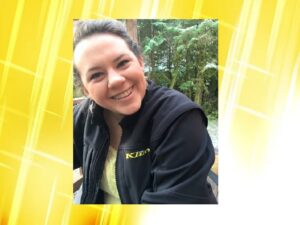This is a guest post from the Ketchikan Wellness Coalition and Becca Doyle.
Classroom management and building relationships with my students have been strengths of mine. Following my Master’s of Reading program, I gave more importance to students having a voice in the process of establishing classroom expectations and norms of behavior. I now invite them to take ownership in their learning as well as behavior management. Implementing this approach, I observed frustration, difficulty working in groups, and fear of being wrong. I found that as students interacted more socially, they experienced more discomfort because they were encouraged to solve problems, be comfortable with confusion, and think – which may be different from past experiences in learning, I realized they needed more support socially and emotionally, so I brought in mindfulness. Mindfulness pairs wonderfully with getting students to take more responsibility for their role in learning because they listen to what is happening inside of them, name it, and deal with it in a positive, healthy way.
How does this look in a 6th grade classroom? When I share a strategy, I offer it as a possibility, inviting students to discover what works for them and let go of what doesn’t.
- We use positive mantras to overcome negative thinking. I gave personal examples of moments where I found myself caught in a negative mental loop and provided a sheet of “We say” mantras to help us switch our thinking. Students have written these on sticky notes and posted them on their desk.
- I have posted an “I Believe” creed with ten statements about learning. Focusing on what we can do or what we believe, has helped students overcome their fear or negative beliefs regarding learning. “Smarter is something you get, you can change your mind, your smartness and who you become,” is an example of shifting power in a student’s mind from thinking they don’t understand and will never understand, to just understanding a little bit more today than they did yesterday.
- We include space for reflection through daily exit tickets, the use of sticky notes, journal writing and poster responses. Allowing time for student reflection is important and one I used to think I didn’t have time for. I began journaling for myself about four years ago and discovered the powerful tool it can be. It isn’t effective for everyone, but allowing students to try it as well as providing the space for reflection has allowed some of them to hear their thoughts, express their thoughts, and experience the power for themselves.
- I adopted the 15-week “MindUp” curriculum that helps incorporate mindfulness into the middle school classroom. Teaching students the science of what is happening in their brain, the neuroscience, biology, and chemistry that is taking place when they experience an emotion is part of the toolkit. When a student experiences anxiety, fear, or anger, they can identify the feeling, and recognize their brain’s auto-response. They learn how to breathe, self-talk, walk away for think-space, and overcome the flight, fight, or freeze moment.
- We have tried free YouTube yoga sessions, meditation exercises, balance and focus activities, sensory activities, recorded and posted our thinking and learning making it visible and to help us remember, and journaled. We also tried a variety or partnering groups, allowing us to apply our mindfulness tools into our social learning.
Student responses to the mindfulness learning have varied from, “This is boring, why do we have to do yoga?” to students recognizing what is happening in their brain, verbalizing and using breathing or another strategy to engage their mind. One student shared with me how yoga helped reduce her stress. She said, “I have a lot going on and yoga helps me work out my stress and be able to focus. I have been doing it on my own at home in the morning before school now.” Another student said, “Mindfulness has helped me by making me able to focus and do better in math. I stand in the tree pose when I am working on a hard problem, and it helps me solve my problem. Students have shared how it has helped outside of the classroom as well. One student said, “I use mindfulness when I can’t fall asleep, I will do child’s pose or other yoga stretching. Before a soccer game, I use yoga balancing to help me focus and calm my mind.” Hearing from students how our mindfulness learning has helped them manage emotions is very rewarding and demonstrates successful learning. Making strategies and tools available, providing space to try, and connecting students to mindfulness has positively impacted learning and behavior management in our classroom. Adding mindfulness to my classroom connects students with skills they can use in life, beyond our learning space.
Becca Doyle
Becca teaches 6th grade at Houghtaling Elementary School. This is her sixth year teaching.
Healthy Minds is a monthly column coordinated by Ketchikan Wellness Coalition as a way to share positive stories from people living with mental illness, offer information from local mental health professionals about maintaining mental health in your life, and provide details on tangible activities or actions you can take to strengthen your mental wellness. If you would like to contribute to the column, please contact Romanda Simpson at info@ktnkwc.org




